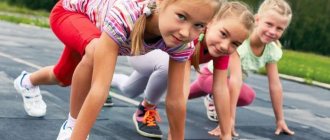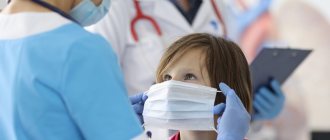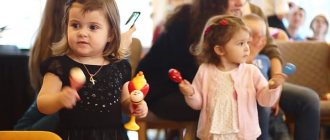Program to form the foundations of a healthy lifestyle for preschool children
4) Personal and professional growth, self-realization, moral satisfaction.
For children:
1) Developed healthy lifestyle skills. 2) Proper physical development of the child’s body, increasing its resistance to infections.
3) Improving somatic health indicators and physical fitness indicators.
4) The formation of a hygienic culture, the presence of a need for a healthy lifestyle and the possibilities of providing it.
For parents:
1) Formed active parental position. 2) Increasing the competence of parents in matters of physical development and health.
3) Active participation of parents in the life of the preschool educational institution.
Technologies for creating a healthy lifestyle
The classification of health-saving technologies in preschool education is determined by the dominance of goals and tasks to be solved, as well as the leading means of health-saving and health-enrichment of the pedagogical process in kindergarten.
In this regard, the following types of health-saving technologies can be distinguished:
Medical and preventive technologies
— technologies that ensure the preservation and enhancement of children’s health under the guidance of preschool medical personnel in accordance with medical requirements and standards, using medical supplies.
These include the following technologies:
organizing monitoring of the health of preschool children and developing recommendations for optimizing children's health;
organization and control of nutrition for children of early and preschool age, physical development of preschool children, hardening;
organization of preventive measures in kindergarten;
organization of control and assistance in meeting SanPiN requirements;
organization of a health-preserving environment in preschool educational institutions.
Physical education and health technologies
– technologies aimed at the physical development and strengthening of the child’s health: the development of physical qualities, motor activity and the formation of physical culture of preschool children, hardening, breathing exercises, massage and self-massage, prevention of flat feet and the formation of correct posture, health procedures in the aquatic environment, nurturing habits for everyday life physical activity and health care, etc. the implementation of these technologies is carried out by physical education specialists and preschool teachers in the conditions of specially organized forms of health-improving work.
Health-saving educational technologies in kindergarten
are,
first of all, technologies for educating a valeological culture or a culture of health in preschoolers. The purpose of these technologies is to develop a child’s conscious attitude towards health and human life, accumulate knowledge about health and develop the ability to protect, support and preserve it, acquire valeological competence, allowing a preschooler to independently and effectively solve the problems of a healthy lifestyle and safe behavior, tasks associated with provision of basic medical and psychological self-help and assistance.
Forming children's ideas about a healthy lifestyle or how to instill the habit of being healthy
Preschool age is one of the most crucial periods in the life of every person. It is during this age period that the foundations of health and proper physical development are laid, motor abilities are formed, interest in physical culture and sports is formed, and personal, moral-volitional and behavioral qualities are cultivated.
Forming ideas about a healthy lifestyle in preschoolers will be most successful if:
· the content of the concept of “healthy lifestyle” has been determined, including both biological and social concepts, as well as environmental ones, and revealing the dependence of a healthy lifestyle on the state of the surrounding ecological environment;
· a pedagogical technology has been designed, including forms, methods, conditions, principles, stages of the formation of ideas about a healthy lifestyle: “health” and “human lifestyle”, “dependence of health and lifestyle on the state of the surrounding social and ecological environment”, “healthy image life is the basis for maintaining and strengthening health"
· a model of interaction between subjects of the educational process has been developed, which involves training teachers to solve the problems of developing a healthy lifestyle in children, for methodological and educational work with parents, and the direct influence of teachers and parents on children.
Adults themselves rarely adhere to these rules in everyday life, and children see this well. In addition, following the necessary rules of a healthy lifestyle requires significant volitional efforts from a person, which is extremely difficult for a preschool child who has an insufficiently formed emotional-volitional sphere.
In order to actively influence a child’s position in relation to his own health, it is necessary to know, first of all, that the state of health itself is formed as a result of the interaction of external (natural and social) and internal (heredity, gender, age) factors. There are several components of health:
1. Somatic health is the current state of the organs and systems of the human body, the basis of which is the biological program of individual development.
2. Physical health - the level of growth and development of organs and systems of the body.
3. Mental health is a state of the mental sphere, the basis of which is a state of general mental comfort.
4. Moral health, the basis of which is determined by the system of values, attitudes and motives of human behavior in society. Ideas about healthy lifestyle in children of different ages.
A child’s attitude towards his health is the foundation on which the building of the need for a healthy lifestyle can be built. It originates and develops in the process of the child’s awareness of himself as a person and personality. A child’s attitude towards health directly depends on the formation of this concept in his consciousness. Children of primary preschool age understand what illness is, but they still cannot give the most basic characteristics of health. As a result, young children practically do not develop any attitude towards him. In middle preschool age, children develop an idea of health as “not a disease.” They talk about how they were sick, they have a negative attitude towards the disease based on their experience. But they still cannot explain what it means to be healthy and feel healthy. Hence the attitude towards health as something abstract. In their understanding, being healthy means not getting sick. When asked what needs to be done to avoid getting sick, many children answer that they should not catch a cold, not eat ice cream on the street, not get their feet wet, etc. From these answers it follows that in middle preschool age children begin to recognize health threats from the external environment (cold, rain, draft), as well as from their own actions (eating ice cream, getting their feet wet, etc.). In older preschool age, due to increasing personal experience, the attitude towards health changes significantly. But there is a confusion of the concepts of “healthy”, as big, good (that’s great!) and “healthy”, as not sick; children still correlate health with illness, but more clearly define threats to health as from their own actions (“you can’t eat dirty fruits”, “you can’t take food with dirty hands”, etc.), and from the external environment. With certain educational work, children correlate the concept of “health” with the implementation of hygiene rules. They begin to correlate physical education with health promotion and in its definition (like, in fact, adults) they put the physical component in first place. At this age, children (albeit still intuitively) begin to highlight both the mental and social components of health (“everyone there was screaming and swearing, and I got a headache”). But, despite the existing ideas about health and ways to preserve it, in general, the attitude towards it among children of senior preschool age remains quite passive. The reasons for this attitude lie in children’s lack of necessary knowledge about it, as well as their lack of awareness of the dangers of unhealthy human behavior for maintaining health. Unhealthy behavior in some cases brings pleasure (how nice it is to eat cold ice cream, drink a whole bottle of chilled lemonade, run through a puddle, lie in bed longer, etc.), and the long-term negative consequences of such actions seem distant and unlikely to the child. With targeted upbringing, training, reinforcement of hygiene rules in everyday life, and appropriate motivation for physical education, children’s attitude towards their health changes significantly. The attitude towards health as the greatest value in life (at a level that children can understand) becomes the basis for developing in children the need for a healthy lifestyle. In turn, the presence of this need helps solve the most important psychological and social task of developing a child’s position as a creator in relation to his own health and the health of others. The main components of a healthy lifestyle for children include:
“Cultivating a healthy lifestyle culture among preschool children”
author: Mukhamadeeva Liliya Ralifovna
instructor of PHYSIC MADOOU of the city of Nizhnevartovsk DS No. 38 “Domovenok”
“Cultivating a healthy lifestyle culture among preschool children”
“Cultivating a culture of healthy lifestyle in preschool children”
“... caring for health is the most important work of a teacher...
V. A. Sukhomlinsky
In preschool childhood, the foundation of a child’s health is laid, his intensive growth and development occurs, basic movements, posture, as well as the necessary skills and habits are formed. Taking care of raising a healthy child is a priority in everyone’s work
preschool institution.
Health is the totality of a person’s physical and mental qualities, which are the basis of his longevity, the implementation of creative plans, the creation of a strong friendly family, the birth and upbringing of children, and the mastery of cultural achievements. A healthy and developed child has good body resistance to harmful environmental factors and resistance to fatigue, and is socially and physically adapted. In preschool childhood, the foundation of a child’s health is laid, his intensive growth and development occurs, basic movements, posture, necessary skills and habits are formed, basic physical qualities are acquired, and character traits are developed.
When a person is healthy, everything works out. Everyone needs health - both children and adults. But you need to be able to take care of your health. If you don't take care of your health, you can lose it. Our task: to teach not only to maintain the health of a preschooler, but also to strengthen it.
Preschool childhood is a very short period in a person’s life.
Forming healthy lifestyle habits is one of the key goals in the preschool education system. And this is understandable - only a healthy child can develop harmoniously. Preschool age is decisive in the formation of the foundation of physical and mental health. Until the age of seven, a child goes through a huge developmental path that is not repeated throughout his subsequent life. It is during this period that intensive development of organs and the formation of functional systems of the body take place, the main personality traits are laid, character and attitude towards oneself and others are formed.
That is why, from an early age, it is necessary to involve a child in taking care of his health, to instill in him interest and activity in self-development and self-preservation.
Teachers of preschool institutions need to work in this direction only together with the family, since the important subject of the initial link of the system is the family. It creates conditions for the primary orientation of children in organizing a healthy lifestyle. The family urgently needs the help of specialists at all stages of preschool childhood. It is obvious that family and children's
The kindergarten, having its own special functions, cannot replace each other and must interact for the sake of the full development of the child. The main task of kindergarten teachers and parents in introducing a healthy lifestyle is to form a reasonable attitude towards their body, teach them to lead a healthy lifestyle from early childhood, and master the necessary sanitary and hygienic skills. Parents should support at home the principles of developing a healthy lifestyle in optimal combination with all health-saving measures carried out in kindergarten.
The habit of a healthy lifestyle is the main, basic, vital habit; it accumulates the result of using the available means of physical education for preschool children in order to solve health, educational and educational problems. Therefore, the preschool institution and the family are called upon in preschool childhood to lay the foundations of a healthy lifestyle, using various forms of work. It is in the family, in a preschool educational institution at an early stage of development that a child should be helped to understand the enduring value of health as early as possible, to realize the purpose of his life, to encourage the child to independently and actively form, maintain and increase his health.
A healthy lifestyle is not just the sum of acquired knowledge, but a lifestyle, adequate behavior in various situations. Children may find themselves in unexpected situations on the street and at home, so the main task is to develop their independence and responsibility. Everything we teach children, they must apply in real life.
Formation of cultural and hygienic skills in preschool children is one of the most pressing tasks in raising children of this age. And how well it is initially thought out, planned and organized depends on whether it will promote health, physical and mental development, as well as fostering a culture of behavior. Hygienic culture is as important for a person as the ability to speak, write, and read. Self-care gives a person a feeling of cleanliness and health. It is necessary to accustom the child to hygienic individualism: his own comb, his own bed, his own potty, his own handkerchief, his own towel, his own toothbrush. Bring children to understand that keeping their body clean is important not only to protect their personal health, but also the health of others.
In kindergarten, educators should teach students to take care of their health and the health of others, develop personal hygiene skills, give knowledge about healthy food, orient children towards a healthy lifestyle, give basic knowledge about what an infectious disease is, what needs to be done to prevent it. get infected. Ways to solve problems: classes, games - classes, visual arts, walks, hygiene procedures, hardening activities, games, sporting events, holidays, conversations, reading literature, the use of emotionally attractive forms. Training is organized not only in the classroom, but also in all routine moments when situations arise that prompt children to make a decision on this problem. Of course, parents should be the main allies in this work. WITH
During the first days of meeting them, teachers should show and tell everything that awaits their children in kindergarten, and pay special attention to issues related to children’s health. Listen to their requests regarding the child’s food, sleep, and clothing. All medical and hardening procedures must be carried out strictly with the consent of the parents.
The main thing is, first of all, to direct the work and prove that without their participation we will not be able to achieve good results, only they are the brightest example for their children.
Family and kindergarten are integral parts of education, each of which has its own special content and gives the child a certain social experience. For these purposes, it is necessary to widely use various forms of cooperation: conversations, consultations, seminars, parent meetings, joint holidays, surveys. Hold open days with demonstrations of methods and techniques for working with children, show different types of physical education activities with preschool children. Invite parents to participate in the life of the kindergarten.
Colorful visual stands in reception areas should familiarize parents with the life of the kindergarten, with the Convention on the Rights of the Child, and with the age characteristics of children. In the corners for parents it is necessary to place practical information, provide interesting facts, and give recommendations from educators and specialists. As a result of such work, the use of various forms and methods of communication with parents, the pedagogical literacy of parents should increase; to improve the culture of interpersonal interaction between children in kindergarten.
Living conditions, the moral and emotional atmosphere in which a child lives, depend entirely on adults, and they, undoubtedly, are responsible for the happiness and health of children.
In accordance with the Law “On Education”, children’s health is one of the priority areas of state policy in the field of education. The issue of strengthening and maintaining health is very acute today. Doctors note a trend towards an increase in the number of preschool children with various functional abnormalities and chronic diseases.
Therefore, every teacher faces questions: how to organize the activities of preschoolers in the classroom in order to give each child the optimal load, taking into account his preparedness and health group? How to develop interest in physical education and the need for a healthy lifestyle?
Therefore, a problem arises that is relevant both for pedagogical science and for practice: how to effectively organize the educational process without harming the health of preschoolers? It is possible to answer this if we approach the organization of education and training from the perspective of the three principles of valeology: preservation, strengthening and formation of health.
Health-saving technologies in preschool education are technologies aimed at solving the priority task of modern preschool education - the task of preserving, maintaining and enriching the health of children, teachers and parents.
Modern health-saving technologies used in the preschool education system reflect two lines of health-improving and developmental work:
Introducing children to physical education
The use of developmental forms of health-improving work. Technologies for preserving and promoting health:
Stretching - no earlier than 30 minutes. after meals, 2 times a week for 30 minutes. from middle age, in a physical education or music hall, or in a group room, in a well-ventilated room, special exercises to music. Recommended for children with sluggish posture and flat feet.
Dynamic pauses – during classes, 2-5 minutes, as children get tired. Recommended for all children as a preventive measure against fatigue. May include elements of eye exercises, breathing exercises and others, depending on the type of activity.
Outdoor and sports games - as part of a physical education lesson, on a walk, in a group room - low, medium and high degrees of mobility Daily for all age groups. Games are selected according to the age of the child, the place and time of the game. In kindergarten we use only elements of sports games.
Relaxation - in any suitable room, depending on the condition of the children and goals, the teacher determines the intensity of the technology. For all age groups. You can use calm classical music (Tchaikovsky, Rachmaninov, sounds of nature. A special relaxation room has been created in our kindergarten.
Finger gymnastics – from a young age, individually or with a subgroup daily. Recommended for all children, especially those with speech problems. Conducted at any convenient time (at any convenient time).
Gymnastics for the eyes – daily for 3-5 minutes. at any free time depending on the intensity of visual load from a young age. It is recommended to use visual material and demonstration by the teacher.
Breathing exercises – in various forms of physical education and health work. Ensure the room is ventilated and the teacher give children instructions on mandatory nasal hygiene before the procedure.
Corrective gymnastics - in various forms of physical education and health work. The form of implementation depends on the task and the number of children.
Orthopedic gymnastics – in various forms of physical education and recreational work. Recommended for children with flat feet and as a prevention of diseases of the supporting arch of the foot/
Technologies for teaching healthy lifestyles
Physical education – 2-3 times a week in a sports hall or music hall. Before class, it is necessary to ventilate the room well.
Morning exercises are one of the most important components of the motor regime; its organization should be aimed at raising the emotional and muscle tone of children.
Healthy running in the air. Healthy running in the air at a medium pace is the most important means of developing general endurance in preschoolers. It is advisable to carry out health jogging with children of senior preschool age 2 times a week on days when there are no physical education classes, during a morning walk. When conducting recreational running, an individually differentiated approach to children should be carried out. Children 5-6 years old with a high and average level of DA are asked to run two laps (500m, and children with a low level of DA are asked to run one lap. Children 6-7 years old with a high and average level of DA run 3-4 laps, and those who are sedentary - 2 laps .
First, do a short warm-up for all muscle groups. At the very beginning, the children run in a “flock”. The teacher runs with them for the first one or two laps, monitoring their well-being. Tired children are asked to leave the race, while others, on the contrary, are encouraged and allowed to show their endurance. The teacher is sometimes in front, sometimes behind, sometimes to the side. Gradually, the children stretch out in a column and run at a uniform pace. Hardy children are encouraged to run one or two more laps on their own. At the same time, the teacher monitors the well-being of the children. Healthy running ends with walking and performing breathing exercises and relaxation exercises.
Exercising after a nap. Gymnastics after a nap in combination with contrasting air baths helps improve children’s mood, improve muscle tone, and also helps prevent posture and foot problems. This gymnastics should be carried out with open transoms for 7-15 minutes. It is advisable to use various gymnastics options throughout the year:
- warming up in bed;
- self-massage;
- gymnastics of a game nature;
- using exercise equipment or a sports complex;
- jogging along massage paths.
Problem-based games (game training and game therapy) - in your free time, possibly in the afternoon. The time is not strictly fixed, depending on the tasks set by the teacher. The lesson can be organized unnoticed by the child, by including the teacher in the process of play activity.
Communication games – 1-2 times a week for 30 minutes. from an older age. Classes are structured according to a specific scheme and consist of several parts. They include conversations, sketches and games of varying degrees of mobility, drawing, modeling, etc.
Corrective technologies
Technologies of musical influence – in various forms of physical education and health activities; or separate classes 2-4 times a month, depending on your goals. Used as an aid as part of other technologies; to relieve stress, increase emotional mood, etc.
Fairytale therapy – 2-4 lessons per month, 30 minutes each. from an older age. Classes are used for psychological therapeutic and developmental work. A fairy tale can be told by an adult, or it can be a group story, where the narrator is not one person, but a group of children, and the rest of the children repeat the necessary movements after the storytellers.
Color influence technologies – Correctly selected interior colors in our group relieve tension and increase the child’s emotional state.
Health-saving technologies used in combination ultimately form a strong motivation in the child for a healthy lifestyle. To make children want to study, it is important to interest the child from the first minutes. To do this, you need to first think through methodological techniques that will help solve the tasks.
The assigned tasks will be successfully solved only by using open pedagogical principles and teaching methods, namely:
The principle of accessibility and individuality involves taking into account the age characteristics and capabilities of the child. One of the main conditions for accessibility is the continuity and gradual complication of tasks - this is achieved by the correct distribution of material in the lesson. Individuality is taking into account individual characteristics. Each child has his own functional capabilities, so the material is learned differently
The principle of gradually increasing demands is to set increasingly difficult tasks for the child and complete them. To do this, it is advisable to alternate exercise with rest.
The principle of systematicity is continuity and regularity of classes. Systematic classes discipline the child, accustom him to methodical and regular work.
The principle of visualization is fundamental in teaching movement. Classes are provided with a number of methodological techniques that make the child want to study. For each task, the teacher chooses the most effective way to explain this task - these are methods such as demonstration, verbal, game, illustrative and visual.
Thus, in order to create conditions for motivation to engage in physical education, it is necessary to create such conditions so that the child develops a strong interest in engaging in physical education and sports, so that he understands the benefits of movements for his health.
“Cultivating a healthy lifestyle culture among preschool children”




